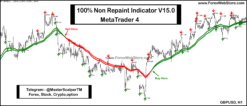-
×
 Forex Scalping MT4 Indicator | 100% Non Repaint Indicator V1.0
1 × $299.00
Forex Scalping MT4 Indicator | 100% Non Repaint Indicator V1.0
1 × $299.00 -
×
 Doubling MA Machine Indicator | 100% Non Repaint Indicator V15.0
4 × $289.00
Doubling MA Machine Indicator | 100% Non Repaint Indicator V15.0
4 × $289.00 -
×
 99 Accurate Forex Trading System for MT4 | 100% Non-Repaint Indicator V20.0
3 × $399.00
99 Accurate Forex Trading System for MT4 | 100% Non-Repaint Indicator V20.0
3 × $399.00 -
×
 Mustafa Buy Sell Face MT4 Indicator
4 × $229.00
Mustafa Buy Sell Face MT4 Indicator
4 × $229.00 -
×
 Super Nifty 50 MT4 Indicator | 100% Non Repaint Indicator V24.0
1 × $289.00
Super Nifty 50 MT4 Indicator | 100% Non Repaint Indicator V24.0
1 × $289.00 -
×
 Super Trend Arrow Indicator | 100% Non Repaint Indicator V11.0
1 × $249.00
Super Trend Arrow Indicator | 100% Non Repaint Indicator V11.0
1 × $249.00 -
×
 Forex Binary Indicator MT4 | 100% Non Repaint Indicator V17.0
1 × $299.00
Forex Binary Indicator MT4 | 100% Non Repaint Indicator V17.0
1 × $299.00 -
×
 All Indicators & Expert advisor VIP Access
2 × $4,499.00
All Indicators & Expert advisor VIP Access
2 × $4,499.00 -
×
 Super Long Trend Indicator | 100% Non Repaint Indicator V14.0
2 × $312.00
Super Long Trend Indicator | 100% Non Repaint Indicator V14.0
2 × $312.00 -
×
 Smart Market Structure Concepts V10 Forex Indicator MT4 |100% Non Repaint Indicator V10.0
1 × $244.00
Smart Market Structure Concepts V10 Forex Indicator MT4 |100% Non Repaint Indicator V10.0
1 × $244.00 -
×
 Pro EMA Gain | 100% Non Repaint Indicator V27.0
1 × $248.00
Pro EMA Gain | 100% Non Repaint Indicator V27.0
1 × $248.00 -
×
 Trend Confirmation Indicator | 100% Non Repaint Indicator V23.0
1 × $299.00
Trend Confirmation Indicator | 100% Non Repaint Indicator V23.0
1 × $299.00 -
×
 Super Buy Sell Arrow Indicator | 100% Non-Repaint Indicator V5.0
1 × $249.00
Super Buy Sell Arrow Indicator | 100% Non-Repaint Indicator V5.0
1 × $249.00 -
×
 Super Box Generator | 100% Non Repaint Indicator V8.0
1 × $234.00
Super Box Generator | 100% Non Repaint Indicator V8.0
1 × $234.00 -
×
 100% Buy-Sell Arrow Indicator | 100% Non Repaint Indicator V12.0
1 × $359.00
100% Buy-Sell Arrow Indicator | 100% Non Repaint Indicator V12.0
1 × $359.00
Subtotal: $15,660.00

